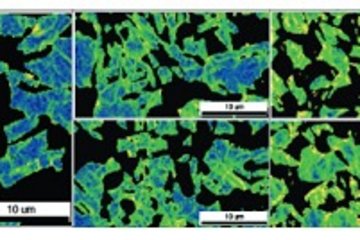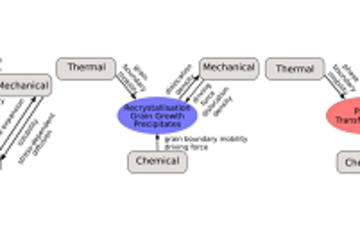All genres
461.
Talk
Application of an eight-band k.p model to study III-nitride semiconductor. DPG Spring Meeting 2009, Dresden, Germany (2009)
462.
Talk
First principles determination of phase transitions in magnetic shape memory alloys. APS March Meeting, Pittsburgh, PA, USA (2009)
463.
Talk
Investigation of group III-nitride semiconductor nanostructures using an eight-band k.p formalism. APS March meeting, Pittsburgh, PA, USA (2009)
464.
Talk
Ab initio up to the melting point: Anharmonicity and vacancies in aluminum. APS March Meeting, Pittsburgh, PA, USA (2009)
465.
Talk
Ab initio investigation of temperature dependent effects in magnetic shape memory Heusler alloys. SPP 1239 Convention, Duisburg, Germany (2009)
466.
Talk
Ab initio steel design: Achievements and challenges. Scientific Advisory Board Meeting 2009, MPI für Eisenforschung GmbH, Düsseldorf, Düsseldorf, Germany (2009)
467.
Talk
First principles determination of thermodynamic properties in metals. ICAMS Monday Seminar, ICAMS Bochum, Germany (2009)
468.
Talk
Computational Phase Studies: Deriving free energies and phase transitions from first principles. MRS 2009 Fall Meeting, Boston, MA, USA (2009)
469.
Talk
Ab-initio simulation of hydrogen in metals. ICAMS Seminar, ICAMS Bochum, Germany (2008)
470.
Talk
Understanding the phase transformations of the Ni2MnGa shape memory system. (2008)
471.
Talk
Modeling of electronic and optical properties of GaN/AlN quantum dots by using the k.p-method. Bremen DFG Forschergruppe: Workshop in Riezlern, Riezlern, Austria (2008)
472.
Talk
First Principles Predictions of Mechanical Properties of FeMn-Alloys. Workshop des SFB761, Beilngries, Germany (2008)
473.
Talk
First Principles Calculation of Stacking Fault Energies of FeMn-Alloys. Materials Science and Engineering (MSE08), Nürnberg, Germany (2008)
474.
Talk
First principles determination of thermodynamic properties of metals. Materials Science and Engineering (MSE08), Nürnberg, Germany (2008)
475.
Talk
Ab initio study of trends in the thermodynamic and kinetic properties of H in 3d transition metals. Computational Materials Science Workshop, Ebernburg Castle, Germany (2008)
476.
Talk
First Principles Predictions of Mechanical Properties of FeMn-Alloys. Computational Materials Science Workshop, Ebernburg Castle, Germany (2008)
477.
Talk
The free energy of bcc iron: Integrated ab initio derivation of vibrational, electronic, and magnetic contributions. Computational Materials Science Workshop, Ebernburg Castle, Germany (2008)
478.
Talk
Effect of strain and polarization on the electronic properties of 2-, 1- and 0-dimensional semiconductor nanostructures. Computational Materials Science Workshop, Ebernburg Castle, Germany (2008)
479.
Talk
Phase transformations of Ni2MnGa shape memory alloy from first principles: The (pre-)martensitic transition by phonons and magnons, Soft mode phase transformation by phonon couplings. Computational Materials Science Workshop, Ebernburg Castle, Germany (2008)
480.
Talk
Ab initio up to the melting point: An efficient thermodynamic integration scheme. Computational Materials Science Workshop, Ebernburg Castle, Germany (2008)











